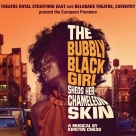The theatre was designed by architect James George Buckle, who was commissioned by the actor-manager Charles Dillon in 1884. It is the architect's only surviving work, built on the site of a wheelwright's shop on Salway Road, close to the junction with Angel Lane. It opened on 17 December 1884 with a revival of Richelieu by Edward Bulwer-Lytton. Two years later, Dillon sold it to Albert O'Leary Fredericks, his sister's brother-in-law and one of the original backers of the scheme.
In 1887 the theatre was renamed Theatre Royal and Palace of Varieties and side extensions were added in 1887. The stage was enlarged in 1891, by the original architect. In 1902, Frank Matcham undertook minor improvements to the entrance and foyer. The Theatre reverted to its Theatre Royal Stratford East ('TRSE') name in 1914. A fire on the stage on August Bank Holiday Monday of 1921 did considerable damage to the rear of the theatre. Thankfully the fire happenned at midnight, with the safety curtain lowered, saving the auditorium which retains many of its original features to this day. The theatre was closed until January 1922.
The Fredericks family continued to manage the theatre until 1932, although after the World War I, the theatre fell into financial difficulties, opening only irregularly after 1926. The proscenium is surmounted by the letters "FF", commemorating the association with the Fredericks – possibly Frederick Fredericks, the husband of Dillon's sister, and a successful actor in his own right. Theatre superstition has it that should the letters ever be removed, the theatre will crumble.
TRSE closed in 1938 and remained closed until 1943. Revues were then briefly tried, but failed, and again the theatre was closed until October 1946. Taken over by David Horne, it briefly became a successful playhouse including the legendary premiere of Patrick Hamilton's Gas Light, with Sybil Thorndike and Derek Bond – which ran for six months and was the theatre's first transfer to the West End. The theatre closed again in December 1949.
In late 1950, a touring company presented the Christmas pantomime, Alice in Wonderland. Highly experimental, its success was by no means guaranteed or uniform throughout the tour. "They'll lynch us", recalls Sven Stahl. "I still have nightmares about Alice in Wonderland at Barnsley and the miners throwing pennies at John Blanshard." The company were to return, as the Theatre Workshop in 1953, with artistic director Joan Littlewood and take over the theatre.
The theatre came under threat with the construction of the Stratford shopping centre in the 1970s, but was saved by a public campaign and protected in June 1972 by English Heritage with a Grade II listing. Money remained short, and the manager, Gerry Raffles only managed redecoration and replacements as cash became available. In 2001, following a successful Heritage Lottery Fund bid, all of the theatre's front of house and backstage areas were refurbished as part of the Olympiad's Stratford Cultural Quarter project.
In 1990, TRSE scored a massive hit with the premiere of Five Guys Named Moe, which immediately transferred to the West End and won the Olivier Award for Best Entertainment. The show has been produced all over the word, including Broadway, and continues to be revived regularly. In 2004, TRSE made history by having the first British Black musical, The Big Life, transfer to London's West End, where it played at the Apollo Theatre. In 2005, the theatre produced a musical version of the cult Jamaican film The Harder They Come – famous for its reggae soundtrack, which also transferred to the West End. This production was written by the film director Perry Henzel and was one of the most successful productions in the theatre's history.









Are you a fan? leave your comment